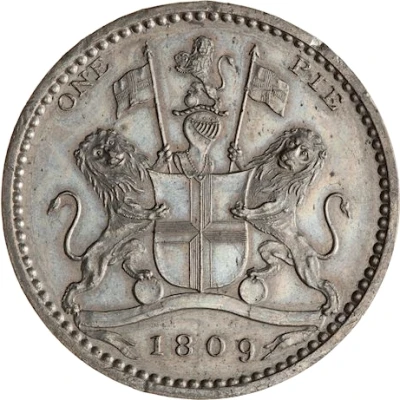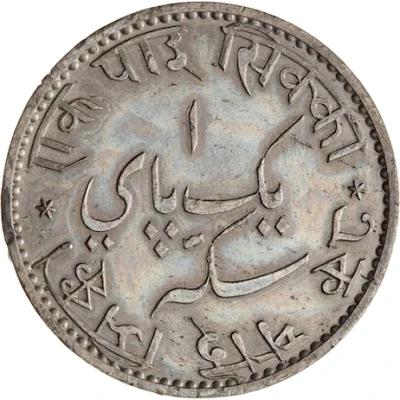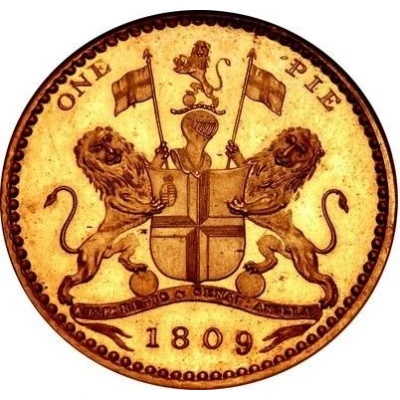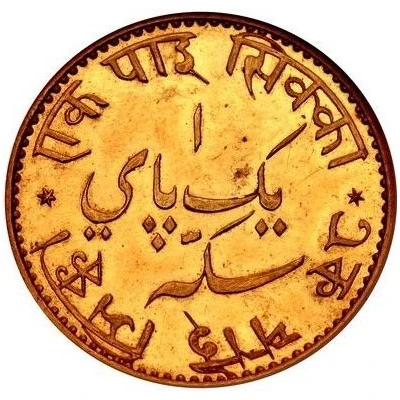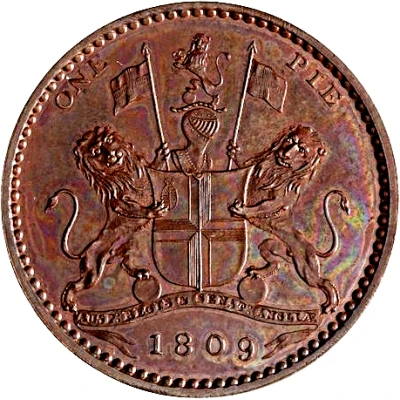
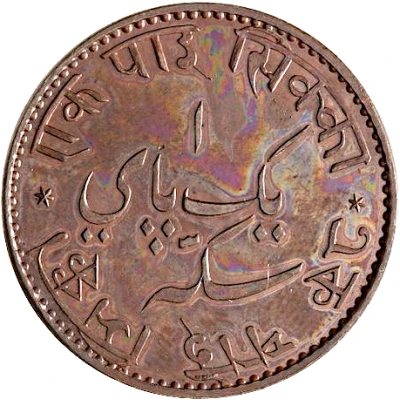

© Museum Victoria
1 Pie Pattern
1809 year| Copper | 7.28 g | - |
| Issuer | Bengal Presidency (British India) |
|---|---|
| Type | Pattern |
| Year | 1809 |
| Value | 1 Pie (1⁄192) |
| Currency | Rupee (1765-1835) |
| Composition | Copper |
| Weight | 7.28 g |
| Shape | Round |
| Technique | Milled |
| Demonetized | Yes |
| Updated | 2024-10-05 |
| Numista | N#76406 |
|---|---|
| Rarity index | 93% |
Reverse
Legend in persian: Yek Pai Sikka
Surrounded by the value in Bengali and Hindi (Ek pai sikka)
Scripts: Arabic, Bengali, Devanagari
Lettering:
एक पाइ सिक्का
এক পাই সিক্কা
Translation: One pice coin
Edge
Plain
Comment
- The Soho Mint of Matthew Boulton and James Watt planned to supply significant numbers of copper coin to the East India Company at the beginning of the nineteenth century. However in 1809 a large shipment for the Madras Presidency was lost when the Admiral Gardner, which was transporting the most needed denomination, the 10-cash coins, sank. Then it was discovered that Soho had struck almost 2.4 million twenty-cash coins that had not been ordered but still expected the East India Company to take and pay for them. This pattern coin prepared by Soho for the Bengal Presidency was a victim of which developed out of the Madras problems. Doty wrote "To close this unhappy period, a projected coinage for Bengal (which might have been even larger than that just completed for Madras) dissolved into thin air, a victim of rising copper prices, ill-feeling, the illness of one designer (John Phillip) and consequent overwork of the other (Conrad Heinrich Kuchler), and the pedantry of Dr. Wilkins, the perfectionist to whom the creation of the three native languages spelling out the denomination had been entrusted. The mistake over the twenty-cash coinage was the final blow, from which the Bengal coinage never recovered." Dotty, Richard The Soho Mint, London, 1998, p.332.- Pridmore# 389
Interesting fact
The Pattern 1 Pie coin from Bengal Presidency (British India) made of Copper weighing 7.28 g is interesting because it was minted during a time of great change in India. The East India Company had recently lost its monopoly on trade with India, and the British government was taking over the administration of the country. This coin was minted as a pattern coin, meaning it was not intended for circulation but rather as a trial or sample coin. It is believed that only a small number of these coins were minted, making them rare and highly sought after by collectors today.
